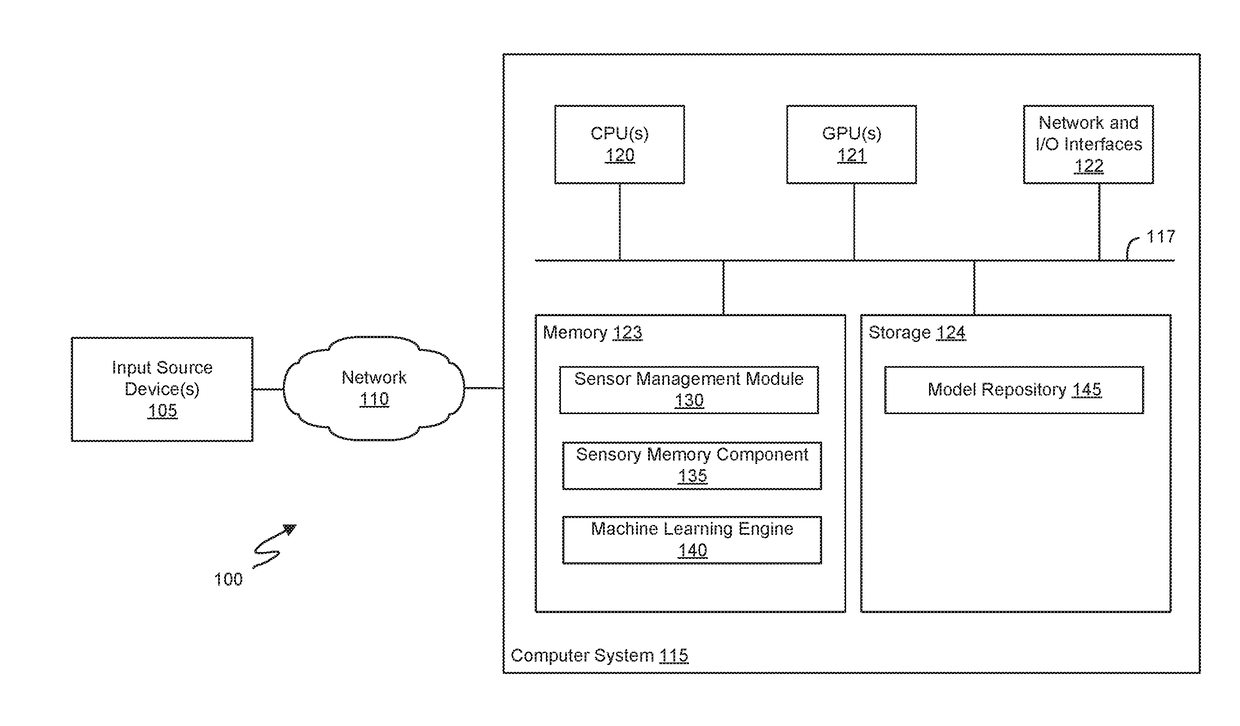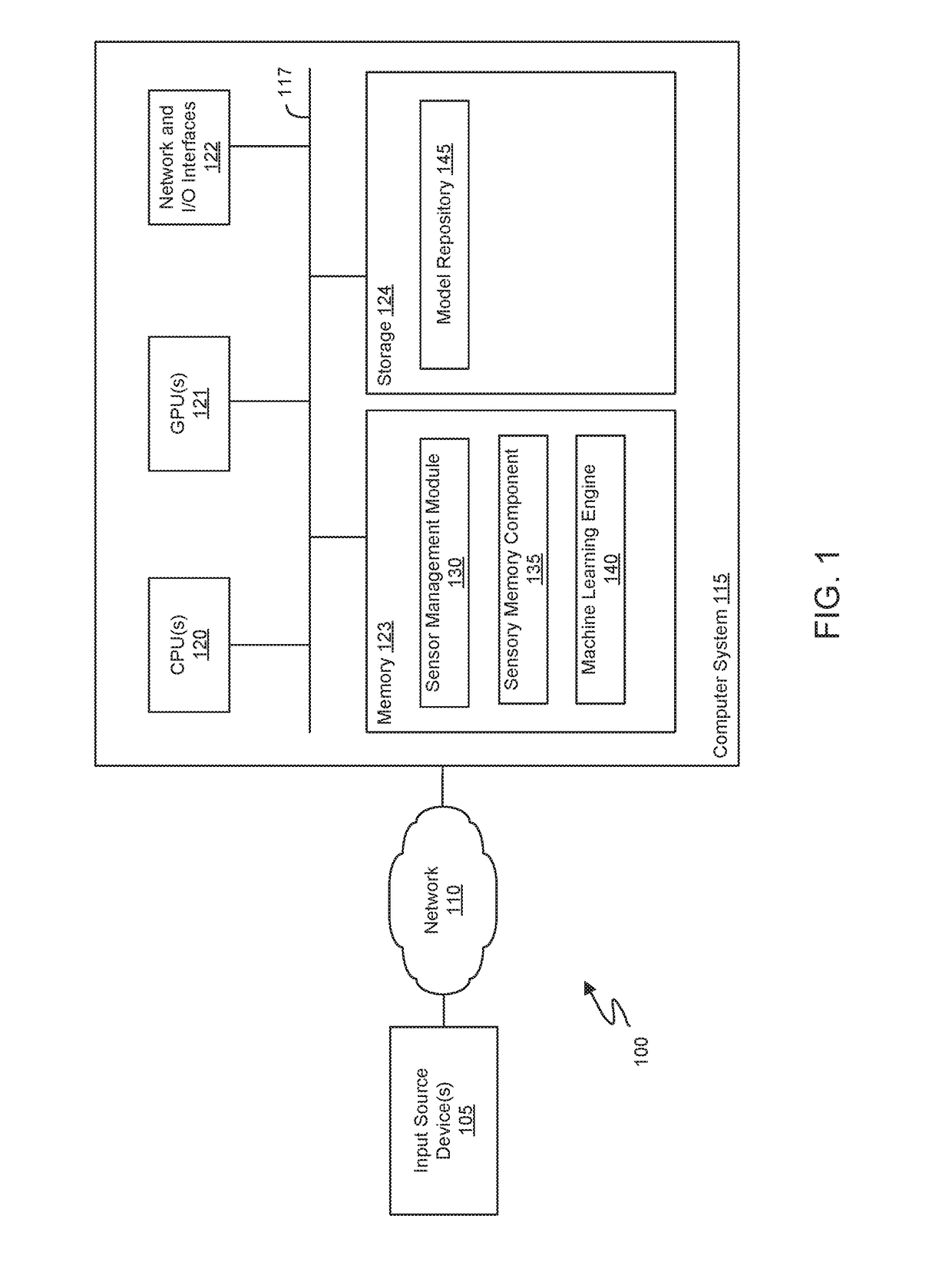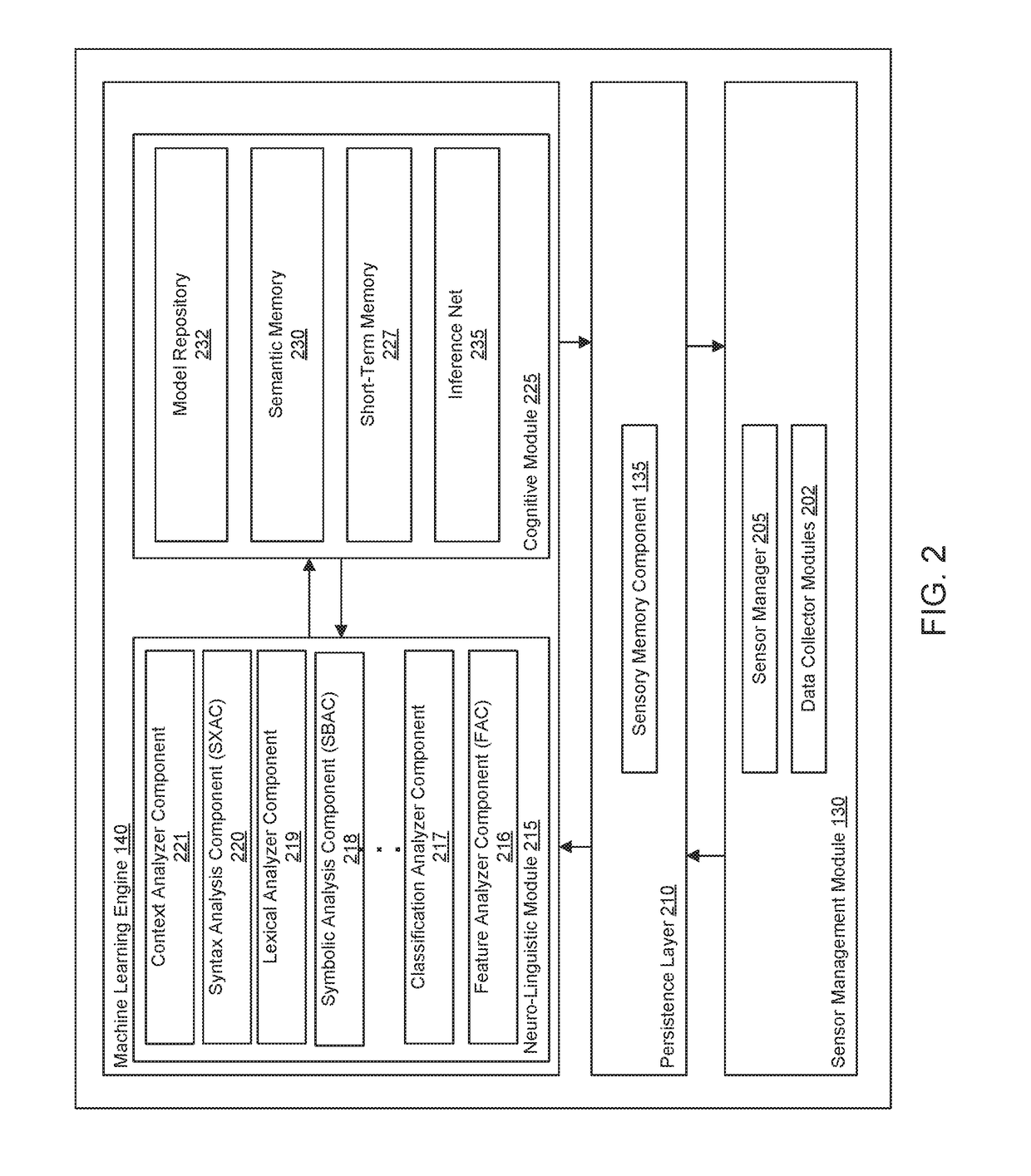Methods and systems using cognitive artifical intelligence to implement adaptive linguistic models to process data
a technology of adaptive linguistic models and cognitive artificial intelligence, applied in the field of methods and systems using cognitive artificial intelligence to implement adaptive linguistic models to process data, can solve problems such as system inability to recognize, rule only based approach is too rigid, and occurrence of behavior can go undetected by the monitoring system
- Summary
- Abstract
- Description
- Claims
- Application Information
AI Technical Summary
Benefits of technology
Problems solved by technology
Method used
Image
Examples
Embodiment Construction
[0027]Embodiments described herein provide a method and a system for analyzing and learning behavior based on acquired sensor data. A machine learning engine may engage in an undirected and unsupervised learning approach to learn patterns regarding behaviors observed via the sensors. Thereafter, when unexpected (i.e., abnormal or unusual) behaviors are observed, special event notifications may be generated.
[0028]In one embodiment, a neuro-linguistic cognitive engine performs learning and analysis on linguistic content (e.g., identified grouped set of symbols) output by a linguistic model that builds an adaptive feature language (AFL) based on this set of symbols dynamically generated from input sensor data. The input data is used to discover base feature symbols which are designated as Alpha symbols (alphas). Combinations of one or more Alpha symbols are designated as betas or feature words. Combinations of one or more betas are designated as gammas or feature syntax. The cognitive ...
PUM
 Login to View More
Login to View More Abstract
Description
Claims
Application Information
 Login to View More
Login to View More - R&D
- Intellectual Property
- Life Sciences
- Materials
- Tech Scout
- Unparalleled Data Quality
- Higher Quality Content
- 60% Fewer Hallucinations
Browse by: Latest US Patents, China's latest patents, Technical Efficacy Thesaurus, Application Domain, Technology Topic, Popular Technical Reports.
© 2025 PatSnap. All rights reserved.Legal|Privacy policy|Modern Slavery Act Transparency Statement|Sitemap|About US| Contact US: help@patsnap.com



